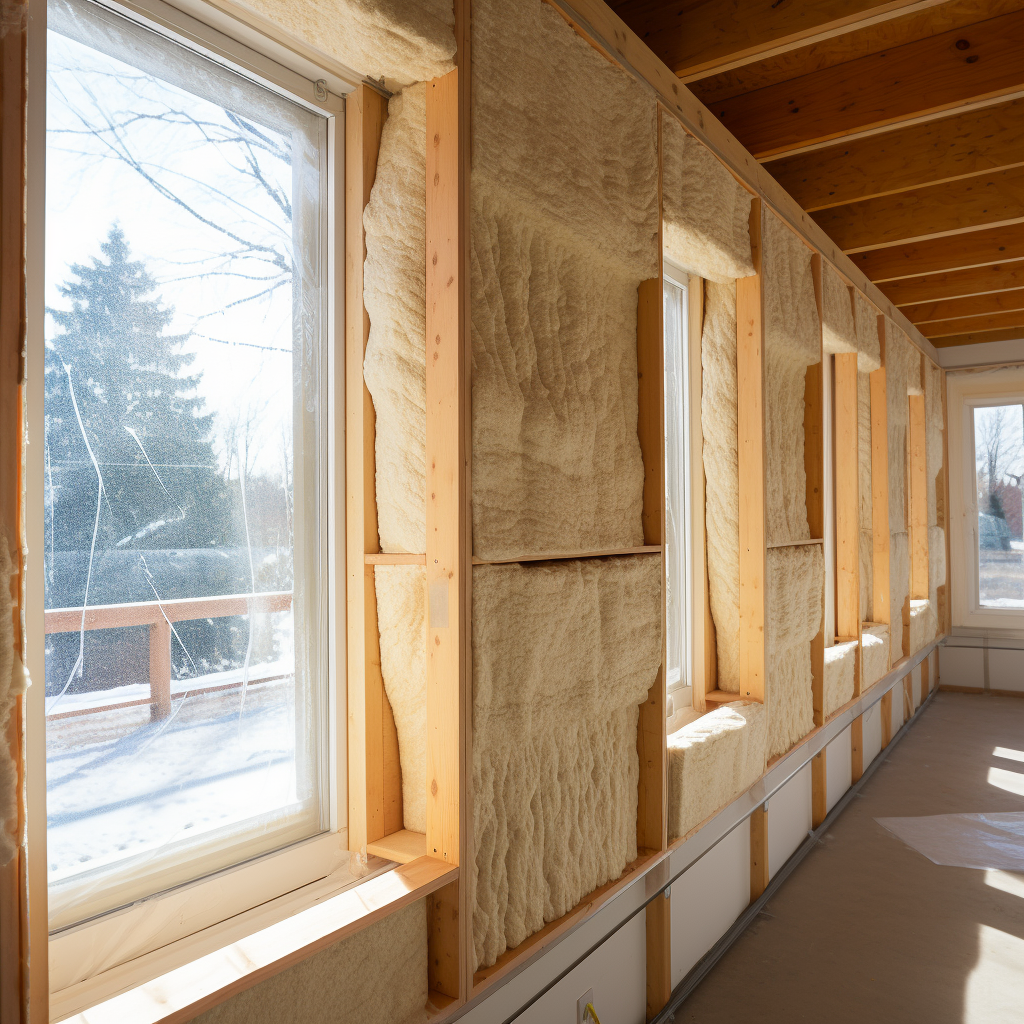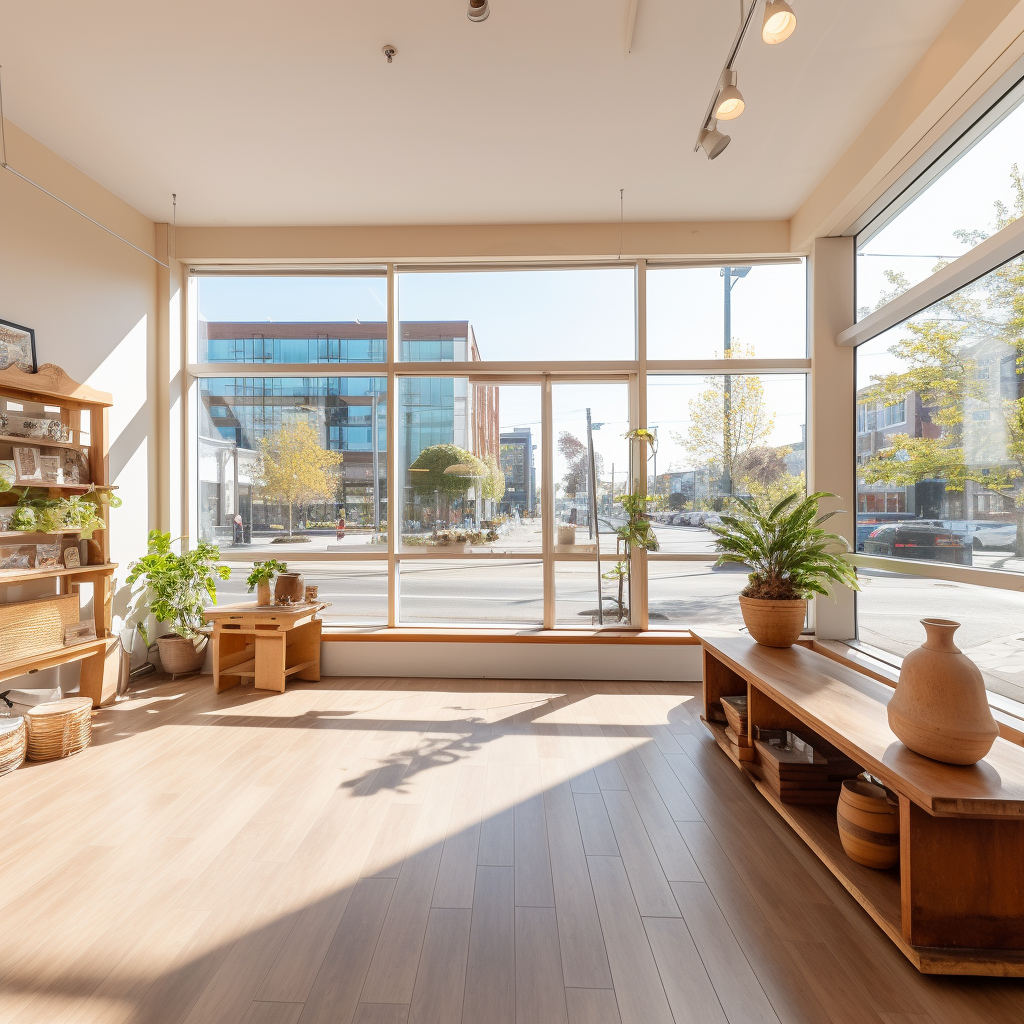Are you looking for ways on how to make a commercial building more energy efficient?
Well, reducing energy consumption is not just about saving on utility bills — it's a necessity for the environment and the creation of a truly sustainable business.
The power consumption of commercial buildings is a major contributor to greenhouse gas emissions and energy waste. By implementing energy-saving solutions, you not only cut down on energy costs but also contribute to a greener future.
In fact, about 20% of all the energy we use in the U.S. goes to power commercial buildings. Unfortunately, the average commercial building actually wastes 30% of its energy.
When businesses begin considering how they can go green and focus on energy efficiency, lighting is often one of the top utilities they address. But there are a lot of ways you can make a commercial building more energy efficient, and many of these tactics won’t cost you a dime.
Additional reading: green energy grants for small businesses
How to make a commercial building more energy efficient
In the pursuit of energy efficiency for commercial buildings, several aspects need to be addressed. From getting an energy audit to HVAC systems and lighting upgrades, we've got you covered:
1. Reducing energy consumption in commercial buildings starts with an audit
Want to know how to reduce energy consumption in buildings the right way?
Unfortunately, so many don't do this, and wish they had... but the best place to start is with an audit.
This involves a thorough examination of:
- How your commercial building uses energy
- Identifies areas where energy is being wasted, and
- Provides recommendations on how to reduce electricity consumption
The results are compiled on a commercial energy audit checklist, which provides actionable guidance on how to reduce energy use.
These recommendations could include upgrading to energy-efficient appliances and systems, improving insulation, using smart thermostats, or implementing renewable energy sources like solar panels.
Energy audits can also help identify less obvious energy drains, like inefficient office equipment or cracks in the building's exterior that allow heat to escape in the winter and cool air to escape in the summer.
By following the recommendations from the commercial energy audit checklist, you can significantly reduce the energy consumption of your building, saving money and contributing to a sustainable future.
2. HVAC maintenance and upgrade
An HVAC system is one of the biggest energy consumers in a commercial building.
With this in mind, regular maintenance and upgrades of these systems can drastically cut down your energy bill, and a well-maintained HVAC system operates more efficiently than one that is not regularly serviced.
Filters should be replaced frequently and systems checked for leaks or other inefficiencies. In addition, regular inspections can ensure that your HVAC system is operating at its peak performance and not wasting energy.
If your building's HVAC system is old, consider upgrading to an energy-efficient model.
Energy Star-rated systems are designed to use less energy while still providing the same level of comfort. Features to look for include variable speed motors and energy-saving settings.
Additional reading: led factory lighting
3. Invest in smart building technology
To further enhance energy efficiency, consider installing smart energy management technology that'll help save conserve energy in the building.
One good example is a smart thermostat — a device that automatically adjust the temperature inside the building, depending on which spaces are occupied. Not all rooms need to be heated or cooled to the same degree, and a smart thermostat can adjust accordingly, significantly cutting down energy consumption.
Other examples of smart technology include:
- Occupancy sensors that turn off lights when no one is in a room
- Automated window shades that utilize natural light for temperature control, and
- Systems that monitor and control various aspects of the building's operations.
Additional reading: mall lighting
4. Building insulation
Correctly installed insulation can provide a barrier against heat loss during winter and prevent heat gain during summer, thus reducing the energy demand on your HVAC system.

Your building's walls, roofs, and floors are the primary areas where insulation is necessary, and the type of insulation material used depends on the specific area of the building being insulated.
For instance:
- Blanket insulation, which comes in the form of batts or rolls, is commonly used in walls and attics.
- Loose-fill or blown-in insulation is perfect for hard-to-reach areas.
- Sprayed foam insulation can be used in enclosed existing walls and open new wall cavities.
The less energy you need to heat or cool your building, the more energy-efficient your building becomes!
Additional reading: lighting layout calculator
5. Enable power saving features on computers & other electronics
Computers and other electronic devices consume a substantial amount of energy in a commercial building, especially when left idle or running overnight. Enabling their power-saving settings can significantly reduce energy consumption.
For example, most computers have a feature that automatically put the computer into a low-power sleep mode after a period of inactivity. Encourage employees to use these settings and to turn off their computers and monitors at the end of the day.
In addition, printers and photocopiers should also have similar power-saving modes.
Unplugging devices that aren't regularly in use is also a great idea! Many will consume energy even when they are switched off but still plugged in. This is known as "phantom power" and can add up to a significant amount of energy over time.
Additional reading: types of light bulbs
6. Optimize water use
By implementing water-saving measures, businesses can significantly reduce not only their water consumption but also their energy consumption.
For example, installing low-flow faucets and toilets and high-efficiency appliances can drastically decrease water usage. Similarly, the use of native or drought-resistant landscaping can reduce the requirement for outdoor watering.
Further, consider investing in a water management system, which monitors water usage and can identify leaks or areas of high usage. These systems can be invaluable in helping to detect inefficiencies and prevent wastage.
On top of this, regular audits of your water usage can also help identify areas where improvements can be made.
Additional reading: types of commercial lighting
7. Switching to energy-efficient appliances
By replacing outdated appliances with Energy Star-rated models, which meet specific efficiency criteria set by the U.S. Environmental Protection Agency, businesses can achieve substantial energy savings.
Typically, these are the types of appliances you should be looking to replace with more efficient models:
- Refrigerators
- Dishwashers
- General office equipment
Sure, you'll have to soak up the initial outlay, but you'll save in the long-run due to a reduction in utility bills.
8. Implement an automated energy schedule
Automated energy schedules, often part of a broader building management system, allow you to program the operation of various building systems, such as lighting, heating, and cooling, to align with occupancy patterns and business hours.
For example, building managers can schedule lights to turn on and off at specific times, depending on when areas of the building are occupied. This can eliminate unnecessary energy usage while ensuring a comfortable and well-lit environment for employees and customers.
Such a schedule will also allow you to precisely control HVAC systems, preventing them from operating when no one is in the building.
9. Upgrade your windows & maximize natural light
Upgrading to energy-efficient windows can significantly cut down on heat loss during winter and keep the building cool during summer.

Modern windows come are typically double-glazed and have low-emissivity coatings that minimize the amount of ultraviolet and infrared light that can pass through glass. These reduce energy costs while ensuring a comfortable indoor environment.
Moreover, maximizing natural light not only reduces the need for artificial lighting but also improves the building's aesthetic and the wellbeing of those inside. This is known as daylighting — using natural light to illuminate the building's interior through proper window placement and using light-reflective colors on walls and floors.
10. Educate employees on energy conservation
Conduct regular training sessions to educate employees about the importance of energy conservation and the ways they can contribute, such as:
- Switching off lights and electronics when not in use
- Using power-saving modes, and
- Reporting any energy wastage they notice
Also consider implementing an energy conservation policy and encouraging employees to follow it. This could be as simple as setting guidelines for the optimal use of air conditioning and heating, or more complex, such as setting energy reduction targets and tracking progress towards them.
Furthermore, incentivize energy-saving behavior. Rewards and recognition for the most energy-efficient departments or employees can create a competitive environment that fosters energy conservation.
11. Plant more trees!
A strategically placed tree can act as a natural windbreak and shade provider, reducing your reliance on heating and cooling systems.
Beyond energy conservation, trees enhance the aesthetic appeal of your property, provide a habitat for wildlife, and contribute to cleaner air by absorbing CO2 emissions. They can also positively impact employee wellbeing, as green spaces have been shown to reduce stress and increase productivity.
12. Lighting upgrades
Traditional incandescent and fluorescent lights consume a significant amount of energy and have a shorter lifespan. Switching to energy-efficient LED lighting solutions can significantly decrease your energy use, and these bulbs last longer, reducing the frequency and cost of replacement.
Additionally, consider implementing a smart lighting system. These systems can automatically adjust the lighting based on the presence of people in a room or the level of natural light, with classic examples being:
- Dimmers
- Sensor-activated lights, and
- Daylight harvesting systems
Every light switched off when not needed and each bulb replaced with energy-efficient custom lighting solutions, contributes towards a more energy-efficient commercial building which is why we recommend you talk to us about our lighting as a service options to see how they can help your business!
Key takeaways on how to reduce energy consumption in commercial buildings
Opting for energy-efficient appliances, implementing automated energy schedules, upgrading windows, educating employees, planting trees, and upgrading to LED lights play a significant role in achieving energy efficiency in commercial buildings.
Each of these elements not only reduces energy usage but also contributes to a healthier, more productive working environment. Commercial lighting solutions, particularly, offer immense potential for energy and cost savings.
So, don't just look at reducing energy consumption as a cost-cutting measure, but also as an investment in the long-term success and sustainability of your commercial building.
Every step towards energy efficiency is a step towards a sustainable future for your business.
So, why wait? At FES Lighting, we provide expert, tailored commercial lighting solutions designed to significantly cut your energy costs and environmental footprint.
Get in touch with us today and let us light the way to your greener, more efficient future!




%20(1).png?width=1080&height=1080&name=FES-Ebook-1%20(1)%20(1).png)